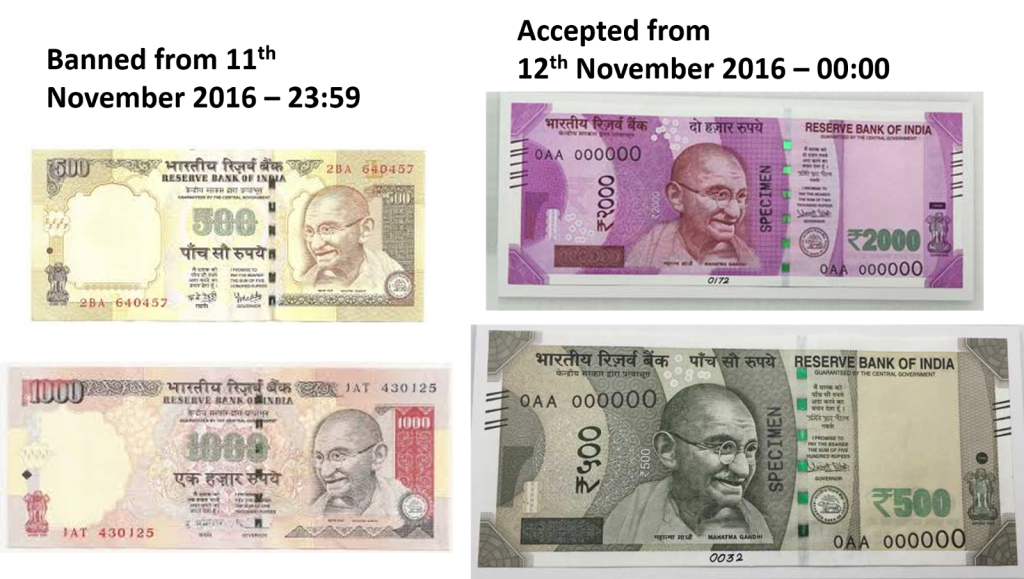Mahatma Gandhi’s portrait has been featured on Indian banknotes for several years. The inclusion of his image on currency notes reflects his significant role in India’s struggle for independence and his enduring impact on the nation’s history. Here is the story behind Mahatma Gandhi’s portrait on Indian banknotes:
- Early Inclusion on Banknotes:
- Mahatma Gandhi’s image first appeared on Indian currency notes shortly after India gained independence from British colonial rule in 1947.
- His portrait was chosen to symbolize the ideals of non-violence, social justice, and freedom that he had advocated during the Indian independence movement.
- The Gandhi Series:
- In 1969, India introduced a new series of banknotes known as the “Gandhi Series” in honor of Mahatma Gandhi.
- These banknotes featured various denominations, with each note prominently displaying Mahatma Gandhi’s portrait on the front.
- Design and Features:
- Mahatma Gandhi’s image typically appears on the front side of the banknotes, while the reverse side features images of Indian heritage, culture, and landmarks.
- Over the years, the design of these banknotes has undergone changes and security enhancements to deter counterfeiting.
- Denominations:
- Mahatma Gandhi’s portrait has been featured on banknotes of different denominations, including the 5, 10, 20, 50, 100, 500, 1000 and 2000 rupee notes.
- Symbol of National Unity:
- Mahatma Gandhi’s image on Indian banknotes serves as a unifying symbol for the diverse and multi-cultural country of India.
- His principles of truth, non-violence, and social justice continue to inspire people across India and the world.
- Continued Use:
- Despite occasional changes in design and denominations, Mahatma Gandhi’s portrait remains a consistent feature on Indian banknotes.
- His image continues to remind people of India’s hard-fought struggle for independence and the values of peace and justice.
It’s important to note that currency design and denominations can change over time, and I do not have access to information beyond September 2021. Therefore, for the most current details regarding the use of Mahatma Gandhi’s portrait on Indian banknotes, you may need to refer to the Reserve Bank of India or other authoritative sources.
The 2016 Indian Banknote Demonetization
In a historic move in November 2016, the Indian government announced a bold and unprecedented step to demonetize high-denomination currency notes in an effort to combat issues like black money, counterfeit currency, and corruption. This significant event had a profound impact on the Indian economy and the lives of its citizens.

Assorted Denomination Indian Rupee Banknotes:
- The Indian rupee banknotes come in various denominations, including 10, 20, 50, 100, 200, 500, and 2000 rupees. These notes, with their unique designs and security features, have been a crucial part of India’s monetary system.
The Indian 1000-Rupee Note:
- The 1000-rupee note, once a high-value denomination in India’s currency system, was one of the denominations that faced demonetization in 2016. The decision to phase out this note aimed to curb illegal financial activities and encourage digital transactions.
The Indian 2000-Rupee Note:
- Introduced in the aftermath of the demonetization as a part of India’s effort to replace the demonetized notes, the 2000-rupee note featured advanced security features and a new design. This high-denomination note facilitated larger transactions and eased the transition during the demonetization process.
The 2016 Indian banknote demonetization was a significant chapter in India’s economic history, sparking both praise and criticism. It led to a surge in digital payments, the promotion of a cashless economy, and greater financial transparency. While it posed challenges for the Indian population in the short term, it was a pivotal step toward achieving long-term economic goals.









